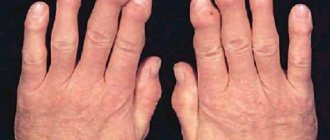Normal human temperature
The concept of a normal body temperature of 36.6 degrees is outdated today. Doctors are increasingly trying not to get attached to specific numbers. Therefore, such a temperature should be called ideal, falling within the boundaries of the norm, but not the only correct indicator, when all other numbers automatically go into the category of pathological.
The normal temperature is considered to be 36-37 degrees.
Research by scientists has demonstrated that the human body temperature changes several times per day. Therefore, it would simply be wrong to single out any one indicator of the norm. The temperature indicator is also affected by a person’s age, gender, and even the type of activity.
What is low-grade fever?
Low-grade fever is a persistent increase in body temperature that lasts for some time. Let's figure out how many degrees a low-grade fever is and what a low-grade body temperature is.
Low-grade fever often occurs for well-founded reasons - overheating, stress, pregnancy or menopause.
It is necessary to worry about an elevated reading and rush to the doctor when the temperature persists for more than three days. The doctor will prescribe a series of diagnostic measures and find out what it is and how to normalize the temperature.
How much is it on the thermometer?
Low-grade fever is a condition in the body in which the body temperature reaches 37-37.9.
Knowing what low-grade fever is in an adult, you can determine when it is necessary to reduce high levels. Usually this temperature lasts for more than one day, it has a certain constancy - it can rise in the mornings or evenings, or remain in this range throughout the day.
37 degrees C
The low-grade temperature on the thermometer starts at 37. Knowing what temperature is considered low-grade, you can judge the deviation from the norm. Despite the fact that the figure is borderline, most doctors rightly count low-grade fever from this point. A temperature of 37-37.2 is considered low-grade fever, and an increase to almost 38 is considered high.
38 degrees C
A temperature reading on the thermometer of 38 is also considered a low-grade fever. This is the upper acceptable limit up to which we can talk about low-grade fever. A temperature rise of more than 38 degrees already indicates a febrile condition.
Diagnosis of symptoms of fever, chills, hot flashes
Diagnosis is based on the patient’s complaints, differential diagnosis is carried out to identify the true causes of such sensations. Brain Clinic specialists eliminate the possibility of making a false diagnosis as much as possible and are focused on identifying the true causes of these symptoms. Our specialists do not prescribe treatment based on symptoms alone.
An example of patient complaints of hot flashes or chills.
Patient: Male, 43 years old, married, two children, businessman, owner of his own business, leads a healthy lifestyle, has never used drugs or alcohol. I turned to the Brain Clinic psychotherapist on the recommendation of a friend, who brought him. The patient described his story as follows:
“It all started a long time ago, somewhere in 1998, at the end of the year, after the main wave of the crisis. I lost almost everything then. It all started with some periodic attacks, either fever or chills. There was no time for treatment, it was necessary to save the case. I didn’t get treatment and didn’t tell anyone. But gradually, after two years, I began to be bothered by chest pain and a low-grade fever of 37.2. Then more - chest pain, a feeling of “coughing”, congestion in the chest, shortness of breath when walking. There was no temperature, congestion, coughing, or chest pain in the morning, or at night either. During the day, tremors often appeared, chills, sometimes fever, sweaty palms, panic attacks, fear, increased heart rate, at the time of the attack the pulse was 120 and the pressure was 150 over 100. I was examined by a neurologist, KMN, in a good medical center, I was diagnosed with vegetative disease -vascular dystonia. All the symptoms that I described to the doctor one hundred percent point to this. I read on the Internet about this disease. I went to a pulmonologist, fluorography, endocrinologist, and oncologist, all without pathology. General blood and urine tests are excellent, I took them 5 times a year. Diseases of the heart, adrenal glands and kidneys are excluded. The temperature began to stay the same almost all the time and alternated between fever and chills. The neurologist prescribed treatment. There was no improvement. The pressure has become even more unstable, for example, during an attack, high blood pressure appears, and the heartbeat is constantly normal all day, 60 - 70 - 80, occasionally 95, but not higher, although previously it always increased to 120 during an attack. Doctors began to talk about hypertension diseases. When an attack began, I began to understand it by the sweating of my palms, some kind of excitement sets in, the muscles of the body twitch, attacks of chills, then attacks of fever and tremors come. Then they prescribed another course of treatment and physical therapy - electrophoresis with drugs. I stopped taking medications, depending on whether you take them or not. No difference. Without the help of medications, your health becomes better and worse. For the first two years it was still possible to endure it, but then it became difficult to bear it all, so I turned to a doctor. But now it’s simply impossible. Constant aching pain, difficulty breathing, coughing, shortness of breath. It has become difficult to get things done; now I don’t drive a car without a driver. The head fills with lead, there is a feeling that there is no blood flowing there, the temples and jaw go numb, sometimes the head burns very strongly on the left side. Dizziness, staggering when walking (impaired coordination), when looking at fast-moving objects, dizziness occurs, tinnitus, pain in the back of the head and neck, there is a feeling of no blood flow, nausea, numbness of the hands and feet, blurred vision worsens, before the eyes the veil then darkens. I feel like I’m about to faint, but I don’t. Severe weakness, as after hard work, drowsiness, loss of appetite, legs give way, like cotton wool, throws you into chills, then into a fever. For example, yesterday there was an attack with only high blood pressure, the pulse was 65 - 70, and the pressure was 150 to 99, and it jumped for about 10 minutes, then it recovered. I didn't take the pills. Today the pressure rose in the same way, without an increase in heart rate, the pulse remained at 70, and the pressure was again 148 over 100, then it dropped on its own. But at first there was a strong chill, then I felt a fever, tremors, loss of coordination, and dizziness began. I visited that medical center again. But now, after an ultrasound of the BCA and an MRI according to the vascular program, vertebral artery syndrome and hypoplasia of the left vertebral artery of the third degree were revealed. They offer surgery, but I’m afraid, because they gave me a different diagnosis and treated me for a long time, but their treatment was completely useless. Now - the operation. I'm afraid it will help in the same way as their previous treatment. I don’t smoke, I don’t drink alcohol, I don’t eat after 7 pm, I don’t eat sweets, flour, or fried foods, I drink only plain filtered or mineral water, green tea without sugar, I follow a daily routine, I get up early, I go to bed early, I used to go to the gym, I have no strength now. I’m already tired of living like this, it’s not life, but one continuous torment. And the work isn’t going well, I’m starting to lose ground in business. I don’t know what else to do.”
Comment from a psychotherapist: VSD, or vegetative-vascular dystonia, is not a diagnosis. This is a manifestation of certain symptoms that indicate the presence of dysfunction between the central and autonomic nervous systems. Symptoms also include panic attacks and hypertension. In this example you can see that the reason for the manifestation
attacks of chills and
attacks of fever, is a breakdown of higher nervous activity against the background of strong psycho-emotional experiences, i.e. against the backdrop of severe stress. A borderline mental disorder has developed, which can be classified as an anxiety-depressive syndrome complicated by autonomic dysfunction.
Causes in adults
There are many conditions that are characterized by an increase in body temperature without specific symptoms. Among these we note:
- tuberculosis - damage to the lungs and other organs by Koch's bacillus;
- thyrotoxicosis – abnormal level of thyroid-stimulating hormone in the blood;
- autoimmune pathologies - a number of diseases in which the immune system gives the wrong signal to the body to destroy its own cells (for example, with arthritis of autoimmune origin);
- malignant tumors and spread of metastases;
- post-viral asthenia – a long recovery time after a viral illness;
- a chronic focus of infection in the body - this can be pharyngitis, tonsillitis, rhinitis and other inflammatory processes;
- certain types of psychoses.
What diseases occur in the evenings?
Low-grade fever in the evenings appears both normally and in pathology. Many people have quite naturally elevated levels and this is not associated with illness. If the temperature rises in the evenings due to pathology, it may be:
- tuberculosis;
- chronic infections;
- immunodeficiency virus;
- endocrine pathologies.
An examination will help you find out exactly what diseases caused your temperature to rise.
In the morning
Elevated body temperature in the morning indicates the presence of a chronic source of infection.
Very often, the cause of low-grade fever is cystitis or pyelonephritis, neurological diseases that develop against the background of infection. Elevated temperature in the morning may indicate pregnancy - usually in the first trimester such cases are common for women.
If it persists for a long time
If a person has a constant low-grade fever, this may indicate the following pathologies:
- immunodeficiency virus;
- cancer;
- endocrine pathologies;
- viral hepatitis;
- chronic inflammation;
- helminthiasis;
- diseases of the digestive system, accompanied by ulcers and erosions.
If your body temperature rises for more than a week, you should consult a doctor and find out the reasons for low-grade fever for a long time. In this case, elevated temperature is recorded as a symptom, the patient is sent for a series of examinations, which ultimately makes it possible to identify the cause and prescribe treatment.
Prolonged rise in temperature after COVID-19
Many patients who have recovered from COVID-19 often continue to have an increase in body temperature to 37.2 - 37.5. Why is this happening? Let's figure it out.
The thermoregulation center is located in a part of the brain called the hypothalamus.
The hypothalamus controls the processes of the endocrine system, which is closely interconnected with the most important organs for thermoregulation - the adrenal glands and the thyroid gland. Thus, when the ambient temperature drops, the release of thyroid hormones, which accelerate metabolism, increases and, as a result, heat formation increases. When the weather changes, the adrenal glands release hormones into the blood that constrict or dilate blood vessels, including those of the skin. Because of this, the level of heat transfer changes.
Physiological fluctuations in body temperature during the day can be 1-1.3 degrees. Moreover, it always increases in the evening and can be normal from 16 to 18 hours in the axillary region within the range of 37.0 - 37.2. This is due to biorhythms and physiological processes in the body (lactation, menstruation in women, reaction to stress, pain, food intake, physical activity, special climatic conditions).
Coronavirus is known to have a damaging effect on the nervous system. Those. fluctuations in body temperature are explained by direct damage to the nervous system. Recovery takes a long time, sometimes several months.
The symptom of low-grade fever is a manifestation of post-Covid syndrome, which has not yet been treated. This is a kind of asthenic syndrome that arose after an illness associated with a significant inflammatory process. Recovery may take several months.
But the nervous system can be helped to recover faster:
► Sleep 7-9 hours every night.
► If possible, arrange a “quiet hour” during the day.
► Minimize the time spent on screens of devices such as a smartphone, tablet, computer or TV.
► Get enough rest.
► Maintain the room temperature at 22 degrees, constantly ventilate for fresh air.
► Maintain water regime – circular shower, contrast shower.
► Eat a balanced and healthy diet: eat plenty of fresh fruits and vegetables, protein, no fast food, fried foods, alcohol or caffeine. It is possible to use enteral nutrition with a high content of protein and energy, for example Nutridrink Compact Protein 125 g (1 plastic bottle) per day for 3-4 weeks.
► Walk in the fresh air and have regular light physical activity (physical therapy, yoga, especially breathing practices, meditation).
► Taking vitamin D in a prophylactic dosage of 2000 IU per day, Magne B6 forte, 1 tablet 3 times per day for 1 month.
► The use of acupuncture is also recognized as evidence-based medicine as a way to recover from illnesses.
However, it is very important for people who have problems with the endocrine system to contact an endocrinologist and monitor their indicators. Additionally, you can determine the level of iron, ferritin, and vitamin D in the blood. If there are abnormalities in the tests, begin appropriate treatment. And in any case, if a low-grade fever appears and persists for a long time, you should consult a doctor to identify possible problems.
What else is important besides measuring body temperature?
People in the process of recovery, especially the elderly, should regularly monitor their pulse and blood pressure, be vigilant about cardiac complaints, and monitor oxygen levels using a pulse oximeter. Normal oxygen saturation is between 96 and 100% and should not fall below 88% during exercise. Therefore, it is important to measure saturation before, during and after exercise.
If after suffering a coronavirus infection you do not feel the same as before, then the All Medicine Clinic has special rehabilitation programs after COVID-19 that will help improve your well-being!
You can find out more by phone or by following the links:
Outpatient rehabilitation program at the All Medicine Clinic
If there are no other symptoms of the disease
An increase in body temperature without symptoms in an adult indicates stress experienced by the body. This may not be classic emotional stress, but any negative effect on the body:
- overheating in the sun;
- long stay in a sauna, bath;
- fatigue;
- evening time, when the temperature was measured;
- exercising too intensely;
- long work without rest.
To eliminate these causes of fever, you need to give the body a rest, sleep, and normalize the emotional background. If the temperature does not return to normal, you should consult a doctor.
Is this normal for a child?
From birth, children have an imperfect thermoregulation system. That is why a baby’s body temperature often fluctuates within one degree. It may increase for a reason if the child is crying, and decrease if the baby is bathed in too cold water. Therefore, it is difficult to talk about temperature norms in children.
A newborn's body temperature is 37-37.5 degrees. After a month of life, it usually decreases slightly and fluctuates between 36.6-37 degrees C. The same indicators remain in the child in the future.
It is important to understand that children are more temperature labile than adults. They are more mobile and subject to emotional fluctuations, which can often lead to an increase in temperature to 37.5 degrees C.
1.General information
A persistent increase in body temperature above the standard established by nature of 36.6 ° C (in the armpit) should not be ignored. Any prolonged or chronic change in homeostasis (constancy of the internal conditions of the body) is an emergency for which compelling reasons must be found. Even if the temperature rises slightly, within one degree (up to the so-called subfebrile values), and remains at this level for a long time, this is already a symptom, that is, by definition, a sign of pathology, and it is important to establish in a timely manner, - which one.
Sometimes this can be very difficult.
It should be noted that the historically familiar method of measuring body temperature in the armpit is not a standard and is due only to the convenience of using a mercury thermometer, including for diagnosing the condition of children. The temperature of different parts of the human body is not the same: for example, in the mouth, ear, anus it is several tenths of a degree higher, i.e. low-grade fever for these zones is the norm, and the norm is even more stable than the temperature range of 36.5 - 36.7 in the armpits - therefore, in many cases it is advisable to measure the temperature rectally.
It is also known that the norm is not absolute, universal for all people: depending on the individual characteristics of metabolism, it can vary slightly. However, the general principle remains unchanged: an abnormally high body temperature for a given organism means acceleration of all biochemical reactions, increased heat transfer, and exceeding the limit of energy consumption and oxygen consumption. Biological “machines” are designed very economically, operate with high efficiency and do not have the ability to waste resources. Consequently, by increasing temperature the body is forced to react to something.
A must read! Help with treatment and hospitalization!
Why might a teenager have it?
An increase in body temperature in adolescence is mainly associated with hormonal changes occurring in the child’s body. For example, in girls, the temperature may rise during the growth of the mammary glands, before menstruation, which is just beginning to become systematic. Sex hormones also provoke an increase in body temperature without symptoms in adolescents.
It is worth noting that it is during adolescence that an increase in body temperature can be a peculiar reaction to stress, tension, emotional and physical overload. Teenagers who are actively involved in sports report fatigue, headaches and hot flashes at certain moments. Low-grade fever in adolescents should not be perceived as a pathology - this is a natural reaction of the body to stress, but with the equalization of hormonal levels it will pass.
Manifestation of hot flashes, chills, hot flashes
Frequent complaints with attacks of fever, chills, hot flashes
- Heart pain, palpitations, chest pain, chest pain.
- Psychosomatic disorders.
- Muscle pain. Muscle pain (“twists”).
- Lower back pain, heaviness in the lower back or back.
- Headaches of various types and intensity.
- Heaviness in the body. Heaviness in the limbs.
- Feeling of a lump in the throat. Difficulty swallowing, choking.
- Nausea, stomach pain, gastrointestinal disorders.
- Feeling of weakness, emptiness, fatigue.
- Dizziness. Impotence.
- Numbness and tingling in different parts of the body.
Naturally, we are not talking about natural manifestations of a feeling of heat, for example, during some infectious diseases, when this is regarded as a natural biological response of the body. And we won’t talk about the natural manifestations of chills when you are in a cold room, on the street, when it’s cold, or when you have an infectious disease. In this section we will look at seemingly causeless attacks of fever without fever and attacks of chills without fever.
Attacks of fever and chills for no reason can occur for various reasons that can occur in the human body. If we exclude the inclusion of these sensations during infections and those associated with external, for example, weather phenomena, then hormonal (for example, during menopause in women or men) and mental causes remain. In this section we will describe the manifestations of hot flashes and chills that occur in various mental disorders.
If hyperthermia persists after ARVI
Prolonged low-grade fever without symptoms, which remains after suffering an acute respiratory viral disease, is called a “temperature tail.” The common name emphasizes that the disease itself, as the cause of the increase in temperature, has already passed, and only the temperature tail remains - a slight increase in body temperature in the amplitude of subfebrile illness, which passes much more slowly.
If the cause of the fever has been eliminated, the person has recovered and there are no complications with the symptoms, then there is no need to bring down the low-grade fever after an acute respiratory viral infection - it will normalize on its own after some time.
What does it mean for women before menstruation?
An increase in temperature before menstruation is normal and does not require treatment.
Changes in temperature are directly related to the influence of hormones that regulate the menstrual cycle - this is the leading cause of increased temperature in women. Typically, the increase in body temperature occurs by one degree and no more - this is not even felt by the body of a healthy woman. The appearance of low-grade fever occurs gradually, within one week before menstruation.
Normalization of temperature occurs after the end of menstrual bleeding. If this did not happen, but on the contrary, the temperature increased, then this indicates the presence of gynecological pathologies:
- adnexitis;
- endometritis;
- premenstrual syndrome.
In this case, you should consult a doctor, undergo a gynecological examination and treat the disease.
Diagnostics
When heat appears throughout the body without fever, the patient turns to a therapist, who determines the probable cause of the symptom, and then writes a referral to a specialist. The doctor is interested in how long ago the symptoms began, what, in the patient’s opinion, they are associated with, and whether any treatment was used at home. Diagnosis of the causes of illness includes the following methods:
- Instrumental Research
. To evaluate the functioning of the heart, an ECG and echocardiography are performed. To identify pathological changes in brain function, a non-invasive EEG method is prescribed. X-ray methods (scintigraphy) are indicated if a tumor process is suspected. - Laboratory methods
. Standard diagnostics include general and biochemical blood tests to exclude hidden inflammatory or metabolic disorders that occur without fever. Be sure to determine the level of thyroid hormones, adrenal hormones, ACTH and TSH. In women, the levels of estrogen, progesterone, FSH and LH are examined. - Neurological examination
. The doctor determines the activity and symmetry of reflexes, checks the initial tone of the autonomic nervous system. To study the characteristics of nervous regulation, functional tests (orthostatic, pharmacological) are used. If necessary, the examination is supplemented with a psychiatric examination.
Normalizing lifestyle and nutrition is the first step to eliminating the feeling of heat
How to measure temperature correctly?
Before worrying about elevated body temperature, it is worth considering whether the indicator is measured correctly. After all, no one is immune from banal errors, and errors when measuring temperature can be significant. Part of the problem may be a thermometer that is faulty.
If everything is in order with the thermometer, you should pay attention to possible flaws during the measurement procedure. Body temperature is usually measured in the armpit - follow this traditional recommendation to understand the temperature constant. Measuring temperature rectally may give slightly elevated readings, which is normal.
When measuring the indicator, you must be in a room with the usual ambient temperature, be in a calm and relaxed state. You should not take measurements after increased physical activity, unless this is the purpose of the experiment. In this case, the body temperature may differ slightly from usual.
When measuring the indicator, take into account the time when the thermometer is placed. For the morning hours, it is quite normal for the reading to be slightly lower than usual, and in the evening the mercury column, creeping towards around 37, should not make you worry - temperature fluctuations during the day are quite possible and happen to most people. It is best to measure the temperature at the same time in order to track the dynamics of the indicator and notice its increase in time.
Heat
High temperature is considered to be pyretic and hyperpyretic indicators. Pyretic temperature is considered to be from 39 degrees to 40.9. A reading of 41 degrees and above is called hyperpyretic. From Greek this word is translated as “fever” - it vividly describes the condition of a patient with such a temperature.
Usually, a pyretic temperature is accompanied by a number of other unpleasant and life-threatening symptoms - aches in the muscles and joints begin, pain in the eyes, photophobia, increased sweating provokes dehydration. In severe situations, a person experiences hallucinations, delusions, the excretory function is disrupted, the body is exposed to intoxication, cardiac activity and the functioning of the respiratory system are disrupted.
What temperature should be lowered in an adult?
Since during a disease the human body must fight the pathogen, the temperature is not reduced until a certain point - with an increased rate, metabolic processes occur faster, toxins are removed from the body and the reactions necessary in the fight against pathology are accelerated.
When body temperature rises above 38.5 degrees, it negatively affects the brain and heart.
In order not to provoke problems with the functioning of internal organs, it is necessary to lower the temperature to low-grade fever, i.e. return it to the limits of 37-37.9. These are optimal indicators during the onset of the disease, at its very peak.
It is not always necessary to adhere to the rule of bringing down only the temperature of 38.5 and above. There are categories of patients for whom such indicators are unacceptable. These include:
- pregnant women;
- people with kidney and heart failure;
- patients suffering from seizures.
If the temperature in these categories of patients rises to 37.9 (maximum), it is worth immediately lowering the temperature. Patients need to know how to do this quickly and safely.
How to shoot down?
{banner_banstat9}
To lower body temperature, it is necessary to use antipyretic drugs. They are presented in any pharmacy with a wide variety of products, so it will not be difficult to purchase good medicine for both adults and children.
Adult patients with extreme heat should use single-component medications based on paracetamol or ibuprofen. Everyone knows the trade names of such drugs - Panadol, Ibuprofen, Efferalgan and others. There are also multicomponent medications that contain ibuprofen or paracetamol along with other components, but they help no worse than single-component medications. These drugs include Theraflu.
A doctor will help you choose a drug, but if it is not possible to consult a doctor, then it is better to prefer drugs from the first group. It is recommended to be careful with analgin and aspirin - they cause a number of side effects, and are strictly prohibited in childhood due to the risk of Reye's syndrome.
The choice of drugs for children is based on the same principle as for adults. For children, special lines of antipyretic drugs have been developed that will help to gently and carefully return the indicator to normal or at least significantly reduce it. Low-grade fever in a child is reduced by the following means:
- Nurofen for children (from 6 years old);
- Cefekon D (from 1-3 months, from 3 months to 3 years, from 3 to 12 years);
- Children's Panadol (syrup from 3 months);
- Nurofen (syrup from 3 months);
- Rinza (from 3 years old);
- Maxicold (from 3 months).
When choosing a drug, you must first take into account age recommendations and purchase strictly those recommended by age. They contain different dosages of the active substance.
Treatment
If the chills are associated with hypothermia, then you need to get to a warm place as quickly as possible and warm up. To reduce the risk of negative consequences, drink hot tea and cover yourself with blankets. If possible, it is recommended to take a warm bath. If chills are caused by stress, you can take sedatives. Peppermint tea is considered an effective folk remedy for relieving nervous tension.
If chills are caused by various diseases, then correct treatment can be prescribed only based on the results of the examination in accordance with the established diagnosis. Nowadays you can buy all the necessary products in pharmacies. It is important to understand that self-medication in order to get rid of chills that arise for unknown reasons is strictly prohibited. All medications should be taken in accordance with the instructions for use and doctor's recommendations.
Reduced body temperature
{banner_banstat10}
Reduced body temperature in humans is no less a problem than increased body temperature. This indicator is considered to be a temperature below 36˚C. Hypothermia also leads to disturbances in the functioning of the body. Patients with low body temperature are easy to recognize - they are prone to drowsiness, apathy, depression, and suffer from tachycardia. Usually have elevated blood glucose levels. Metabolic processes in such people are slowed down, which cannot but affect the functioning of the heart muscle and respiratory system. When the temperature drops critically to 27 degrees, death occurs.
Causes of heat throughout the body without fever
Eating
Eating spicy and hot foods is the most common cause of fever.
The symptom occurs while eating or immediately after finishing a meal. First, a feeling of warmth appears in the torso area, then the heat spreads throughout the body. The person's cheeks turn red and the skin becomes hot to the touch. Sometimes, when taking too spicy foods, general sweating is observed, beads of sweat appear above the upper lip. A feeling of intense heat throughout the body occurs after drinking strong alcohol. When drinking alcohol, you feel a warmth spreading from the chest and abdomen to the extremities. The redness of the face and the shine of the eyes are noticeable. Sometimes drinking alcohol provokes redness not only of the face, but also of the neck and torso. The warming effect does not last long: if a person goes out into the cold, chills without fever quickly develop.
Emotional factors
Heat at normal temperatures is often caused by strong excitement and fear. The person feels as if the whole body is on fire, while the face turns red and the skin becomes very warm or hot. Sometimes, under stress, tremor of the fingers and interruptions in heart function appear. An unpleasant feeling of heat throughout the body persists until the person calms down. Such signs are more typical for emotionally labile young women, but can occur at any age.
Hormonal changes in women
Many cases of fever throughout the body as a component of PMS have been described. The symptom is associated both with disturbances in the regulation of vascular tone caused by changes in hormone levels, and with the increased emotionality of women during this period. Fever without temperature is observed 1-2 days before the onset of menstrual bleeding. It can appear in paroxysms for 5-10 minutes or last for several hours.
Hot flashes throughout the body sometimes occur during menopause, but with this condition, warmth is more often felt in the head and upper torso. Menopausal hot flashes are especially severe at night. Women wake up due to an unpleasant feeling of heat, increased sweating and a feeling of lack of air. Symptoms include headache and darkening of the eyes. The attacks are repeated several times a night, causing insomnia.
Heat throughout the body without fever
Vegetovascular dystonia
When the neuroregulation of vascular tone is impaired, attacks of heat throughout the body without fever are caused by any predisposing factor: stress and overwork, physical activity, cyclical hormonal changes in the female body. Sometimes hot flashes develop for no apparent reason. A person feels that warmth seems to be spreading from the depths of the body, the skin takes on a pink tint and becomes hot.
With vegetative-vascular paroxysms, fever is combined with polymorphic symptoms: dizziness, a feeling of sinking heart, tremors of the hands. As a rule, unmotivated anxiety appears. At the end of the attack, the feeling of warmth is replaced by chills, and sometimes there is cold sweat. The patient has an urge to urinate, during which a large volume of light-colored urine is released.
Allergic reactions
A feeling of heat throughout the body is more typical of pseudo-allergy. The symptom is caused by a sharp release of histamine from cells when consuming certain foods (strawberries, chocolate) and medications. In addition to fever without fever, redness of the entire surface of the skin and severe itching are noted. The clinical picture is complemented by breathing difficulties and paroxysmal headaches. Similar manifestations occur with true allergies.
Arterial hypertension
A feeling of heat without elevated temperature occurs with changes in blood pressure. An increase in blood pressure is accompanied by a feeling of warmth throughout the body and redness of the skin. The patient experiences difficulty breathing, it begins to seem to him that there is “less air” in the room. Feeling better after taking pills that normalize blood pressure.
Thyroid diseases
The symptom is observed with increased hormonal activity of the organ. Thyroid hormones T3 and T4 stimulate basal metabolism and increase energy production, so the feeling of gift accompanies a person constantly. Manifestations do not depend on indoor temperature and emotional factors. Patients complain that they are constantly hot, wear lighter clothes that are not appropriate for the season, and cannot stay in stuffy rooms.
In addition to heat throughout the body, the skin often turns red, but there is no excessive sweating. Inhibition of the activity of the sweat glands is pathognomonic for hyperfunction of the thyroid gland. Symptoms are combined with exophthalmos, rapid heartbeat, and irritability. The appearance of fever without temperature is a typical sign of thyrotoxic goiter, thyroid tumors, and the initial stage of thyroiditis.
CNS diseases
The thermoregulation center is located in the hypothalamus; accordingly, when the brain is damaged, paroxysmal or constant sensations of heat are possible. The pathological sign is not associated with external factors and does not depend on the ambient temperature. Typically, when the hypothalamus is damaged, the fever is accompanied by general hyperthermia. This condition is typical for TBI and tumors of the pituitary-hypothalamic system.










